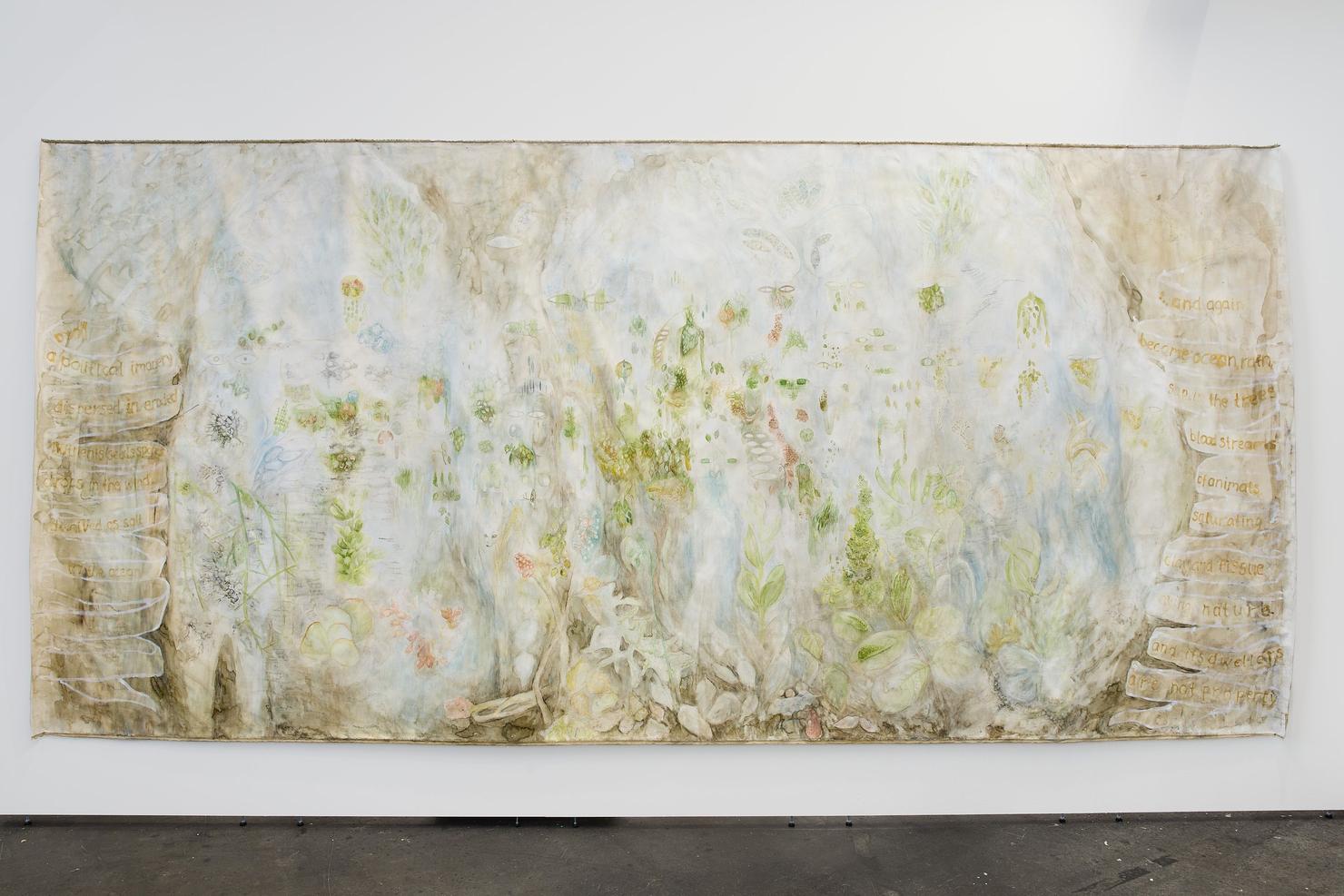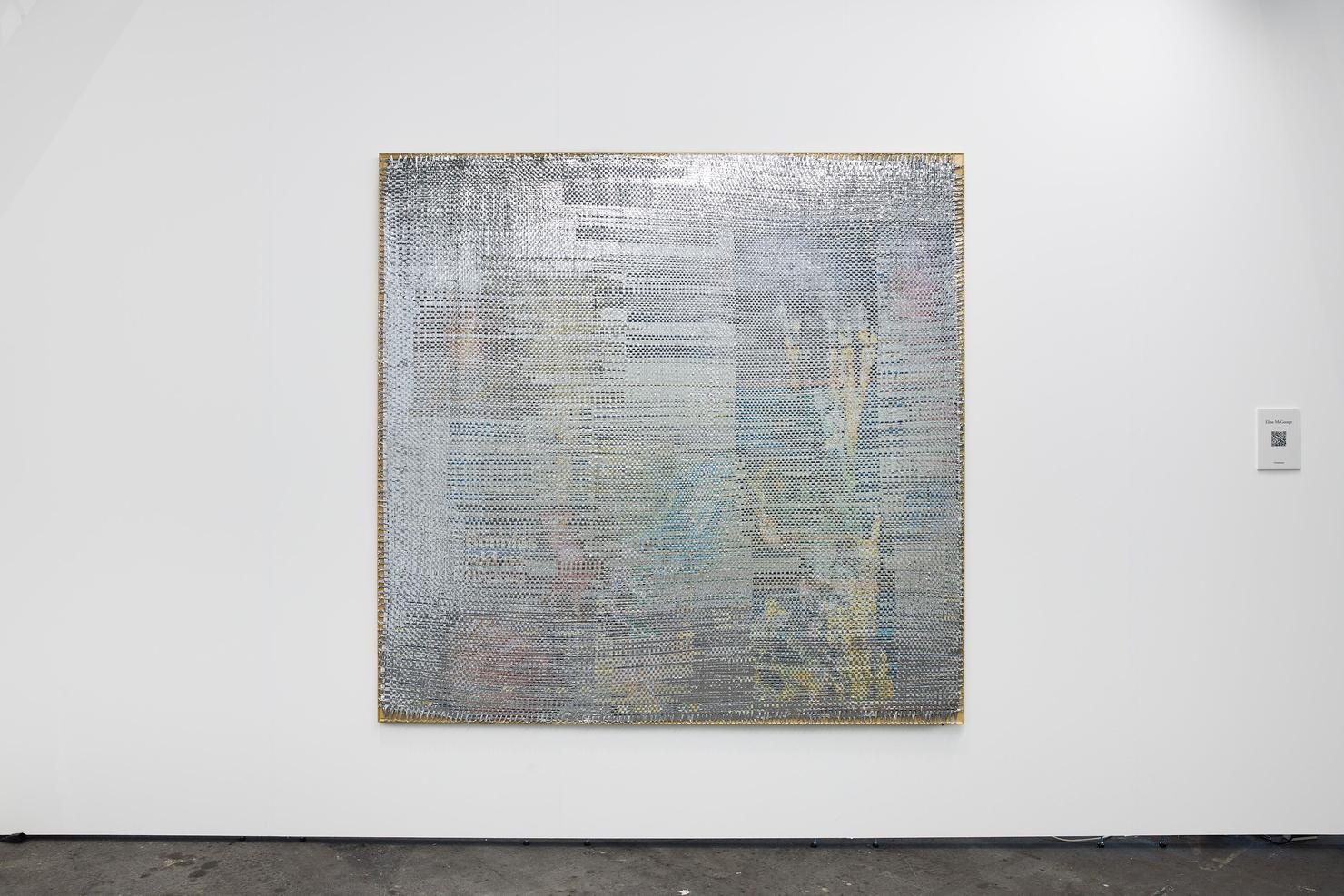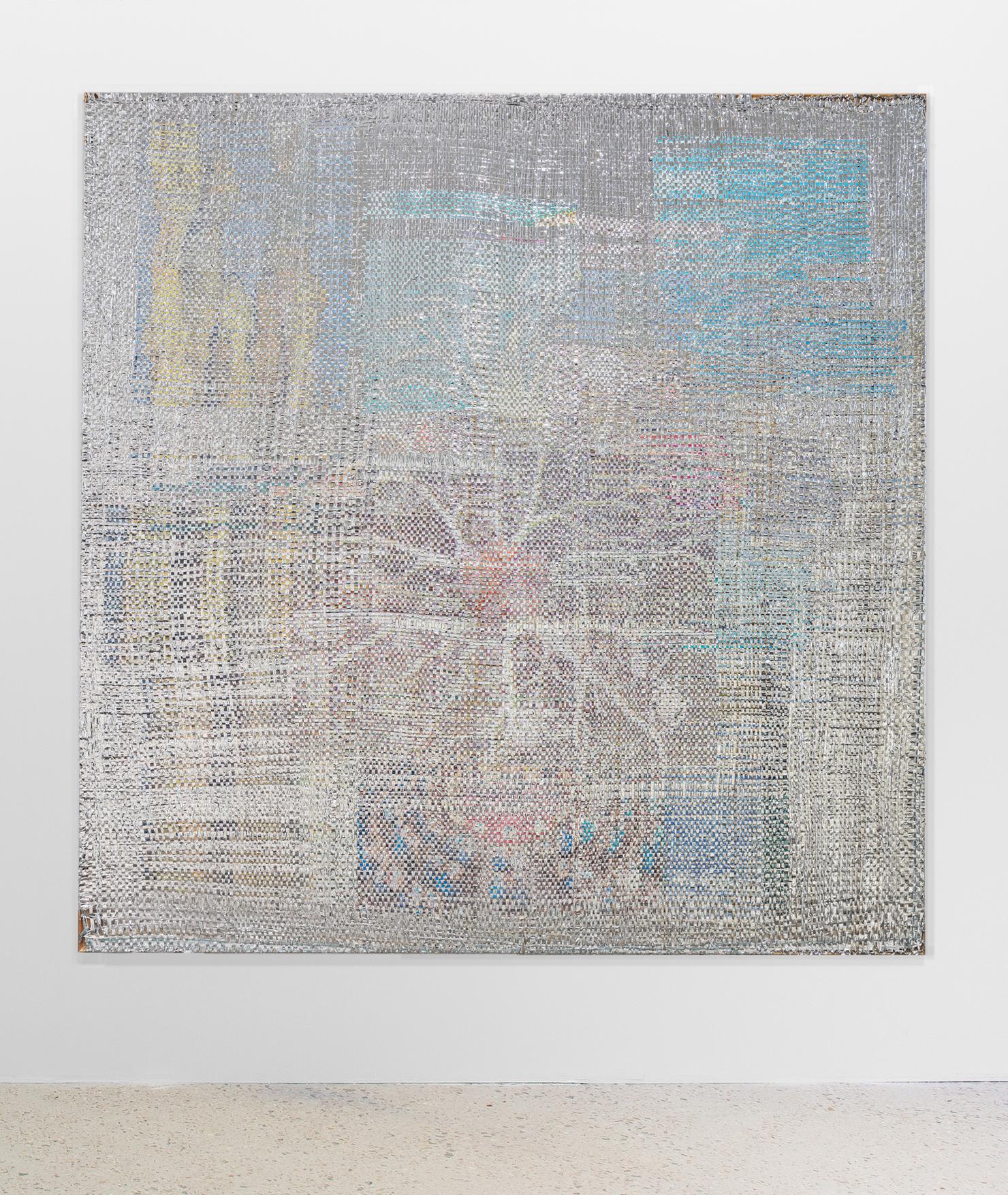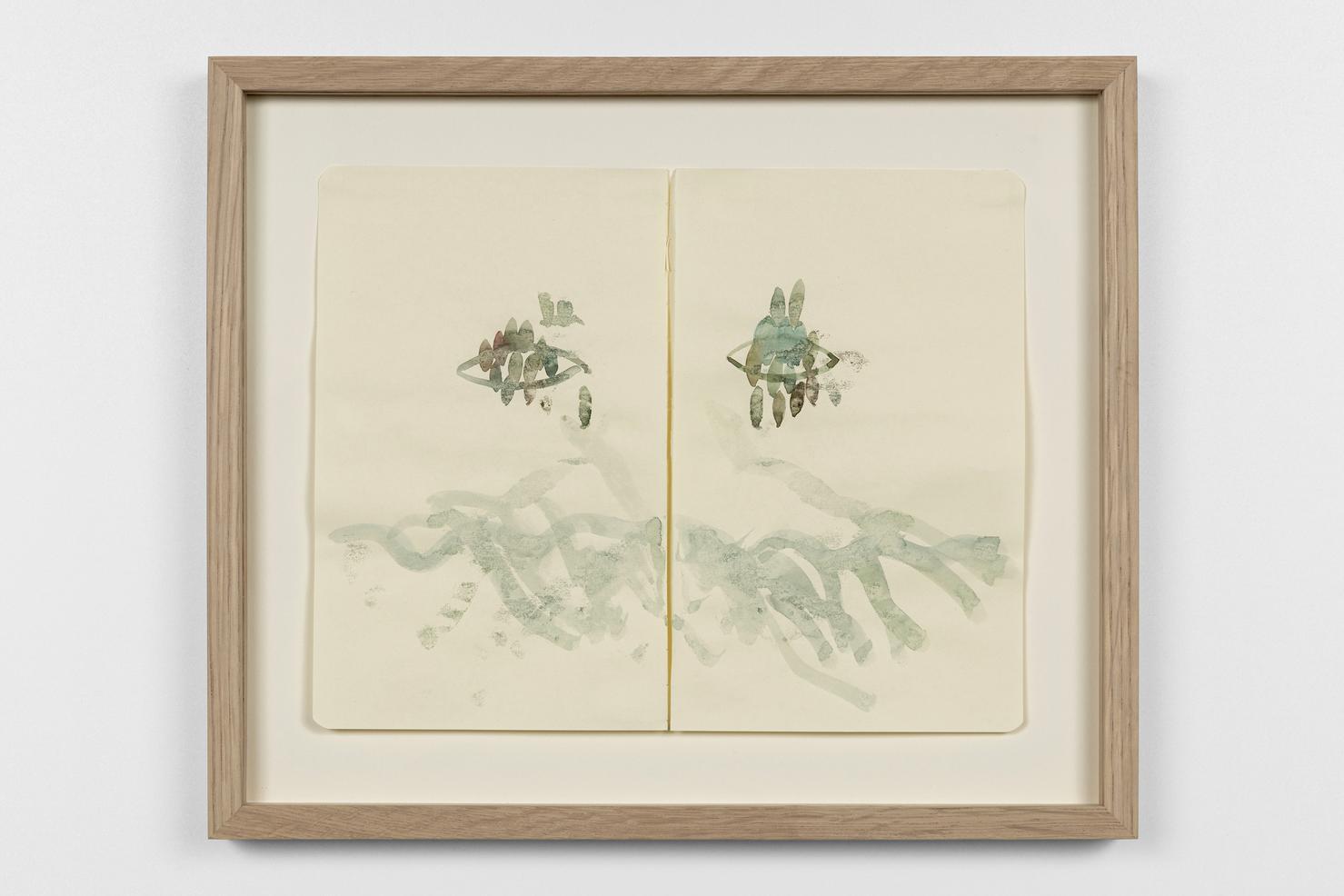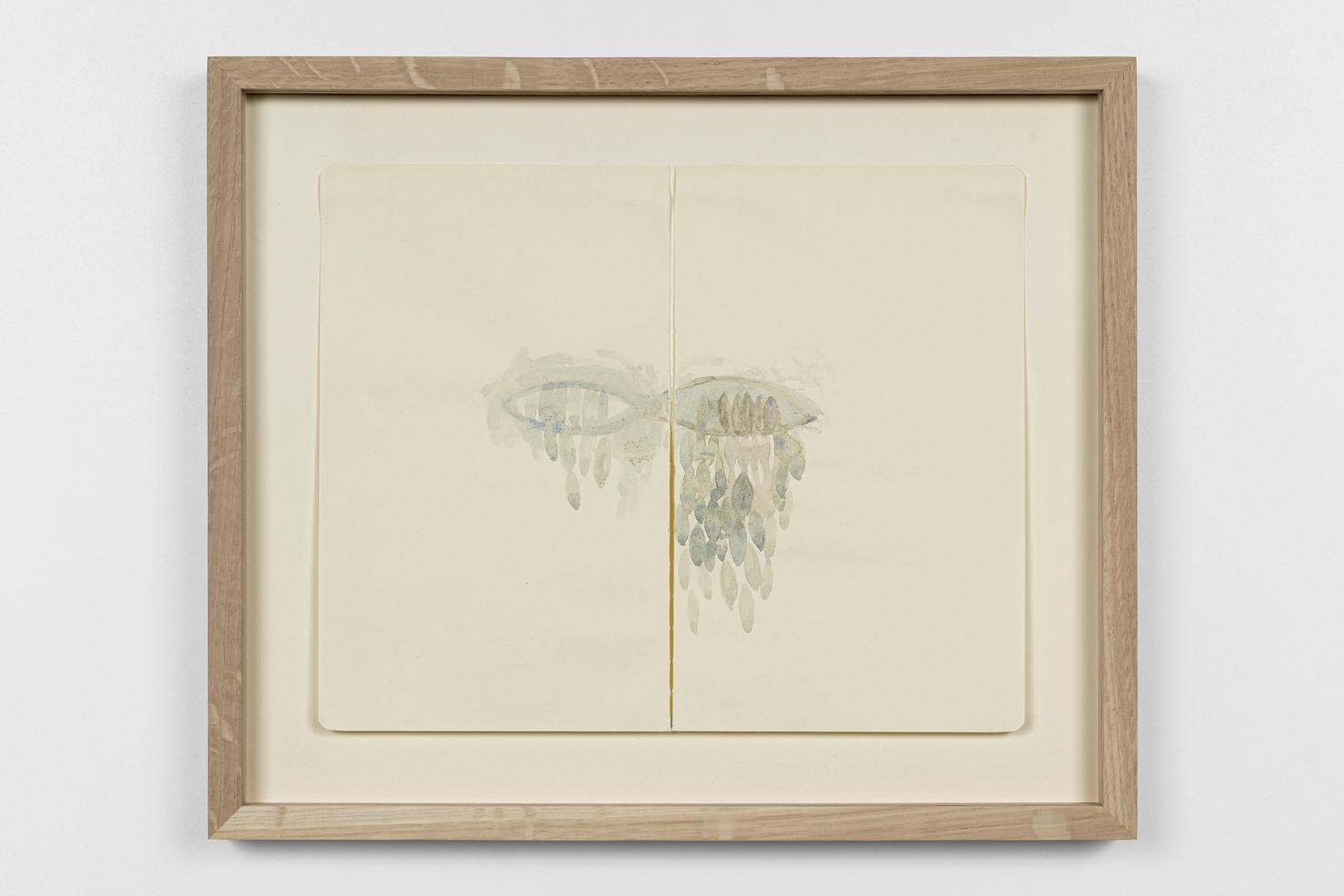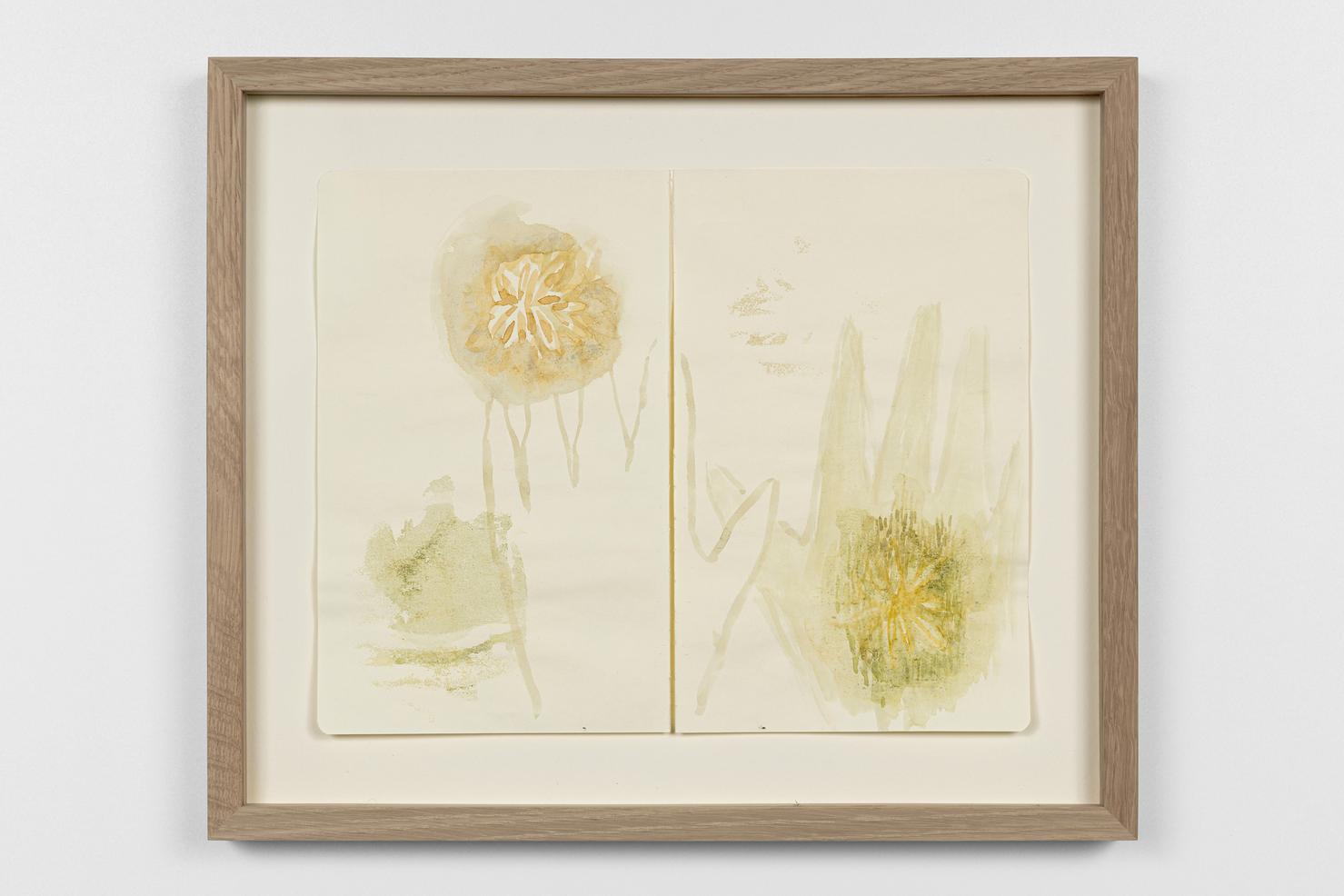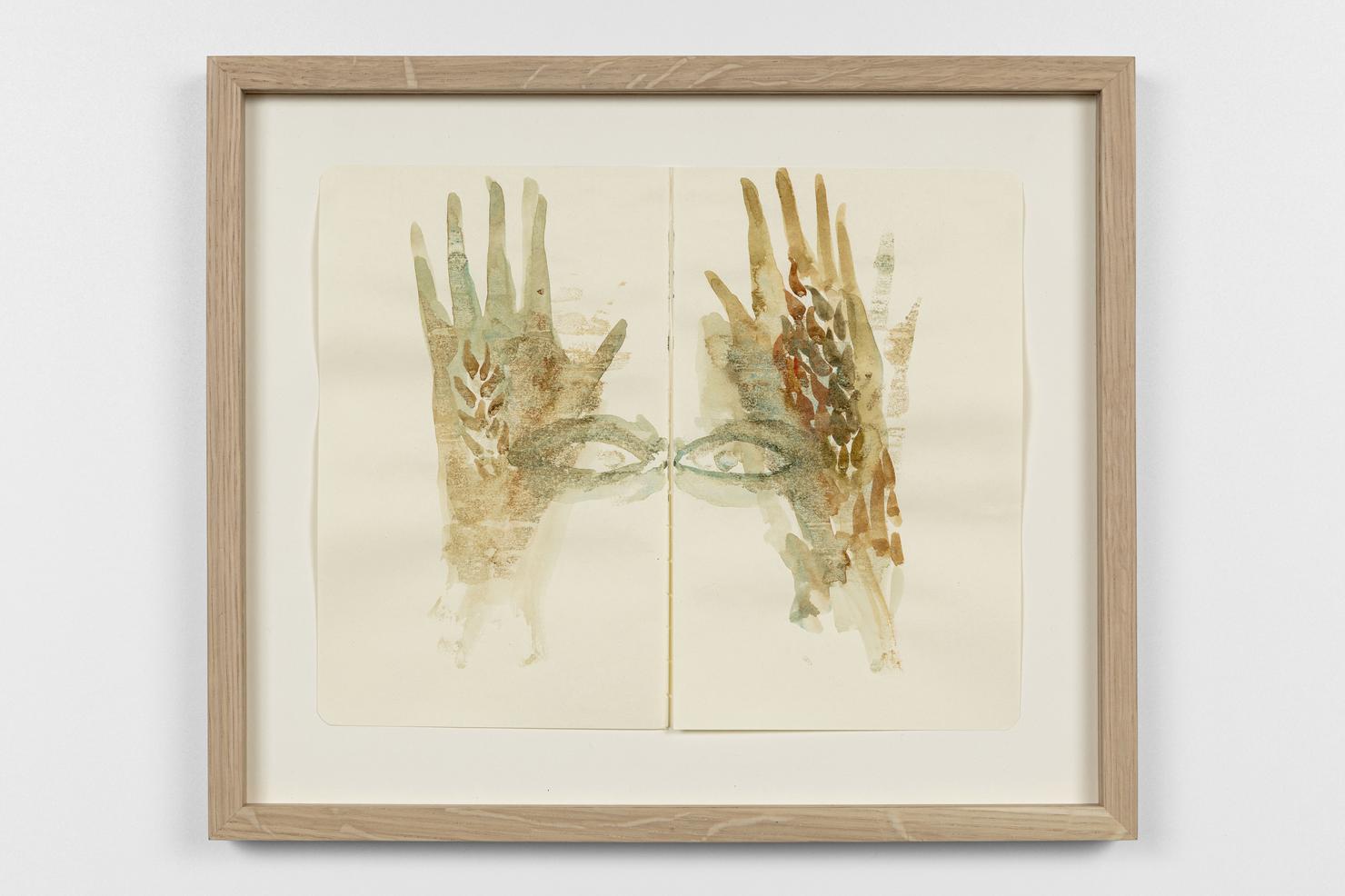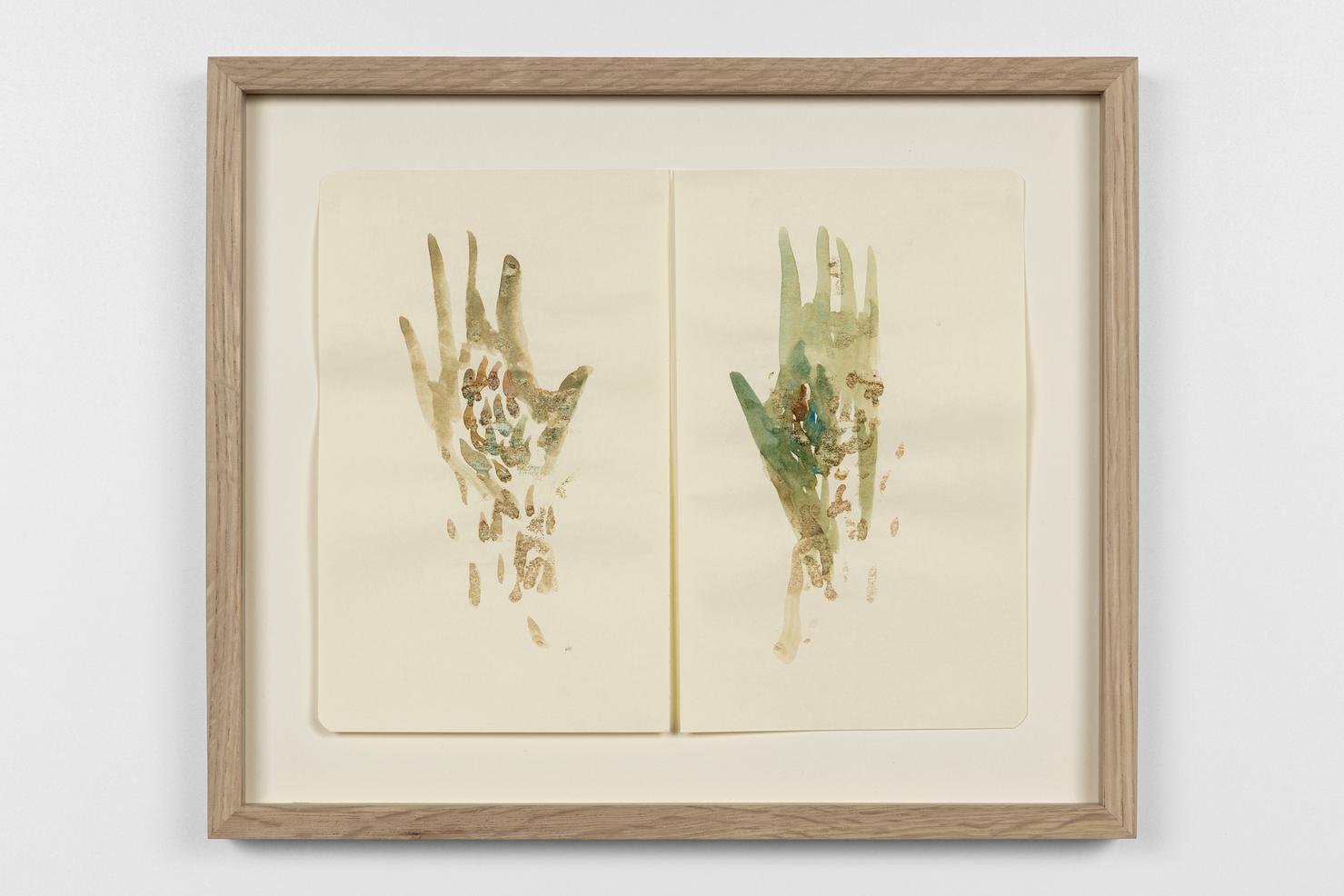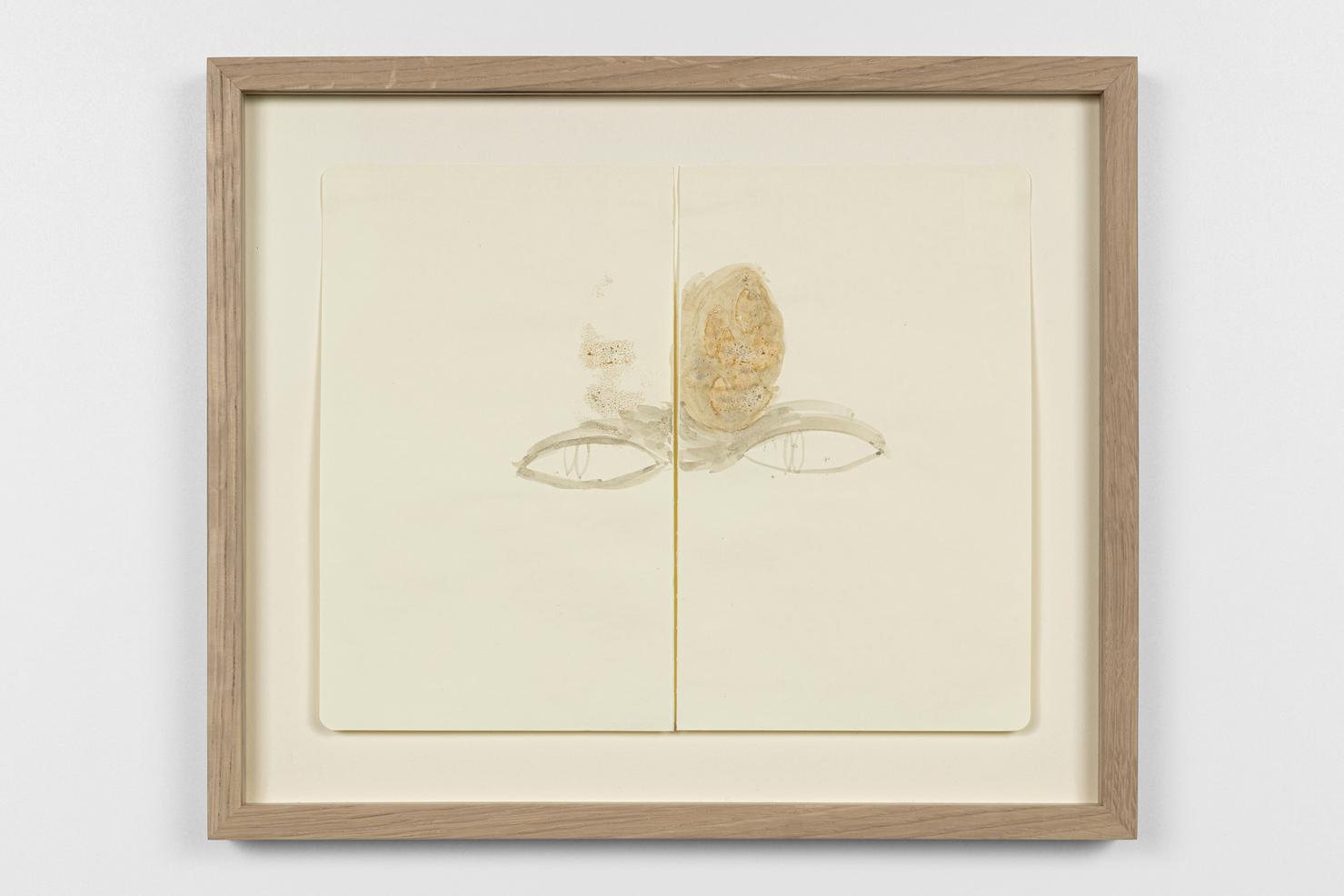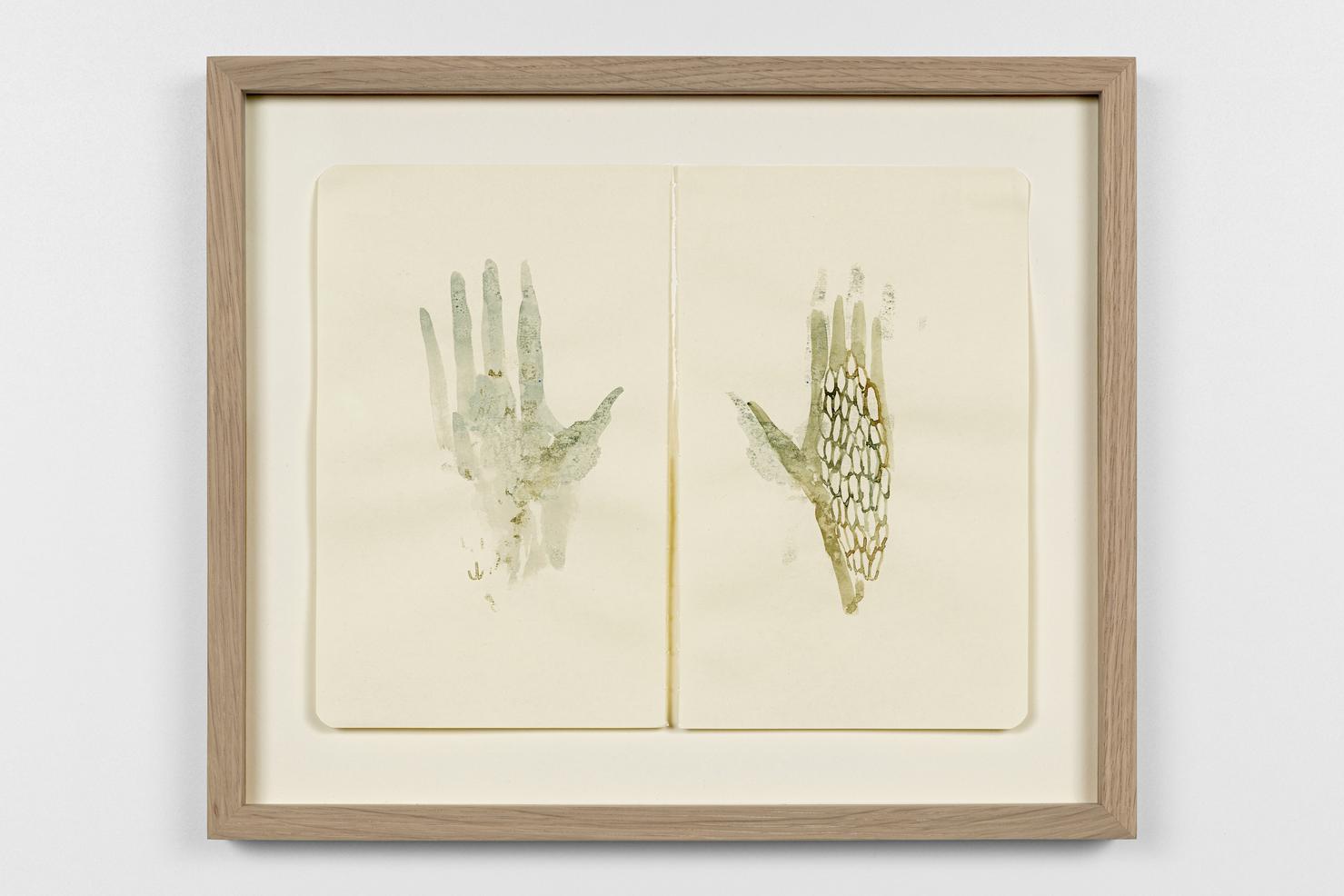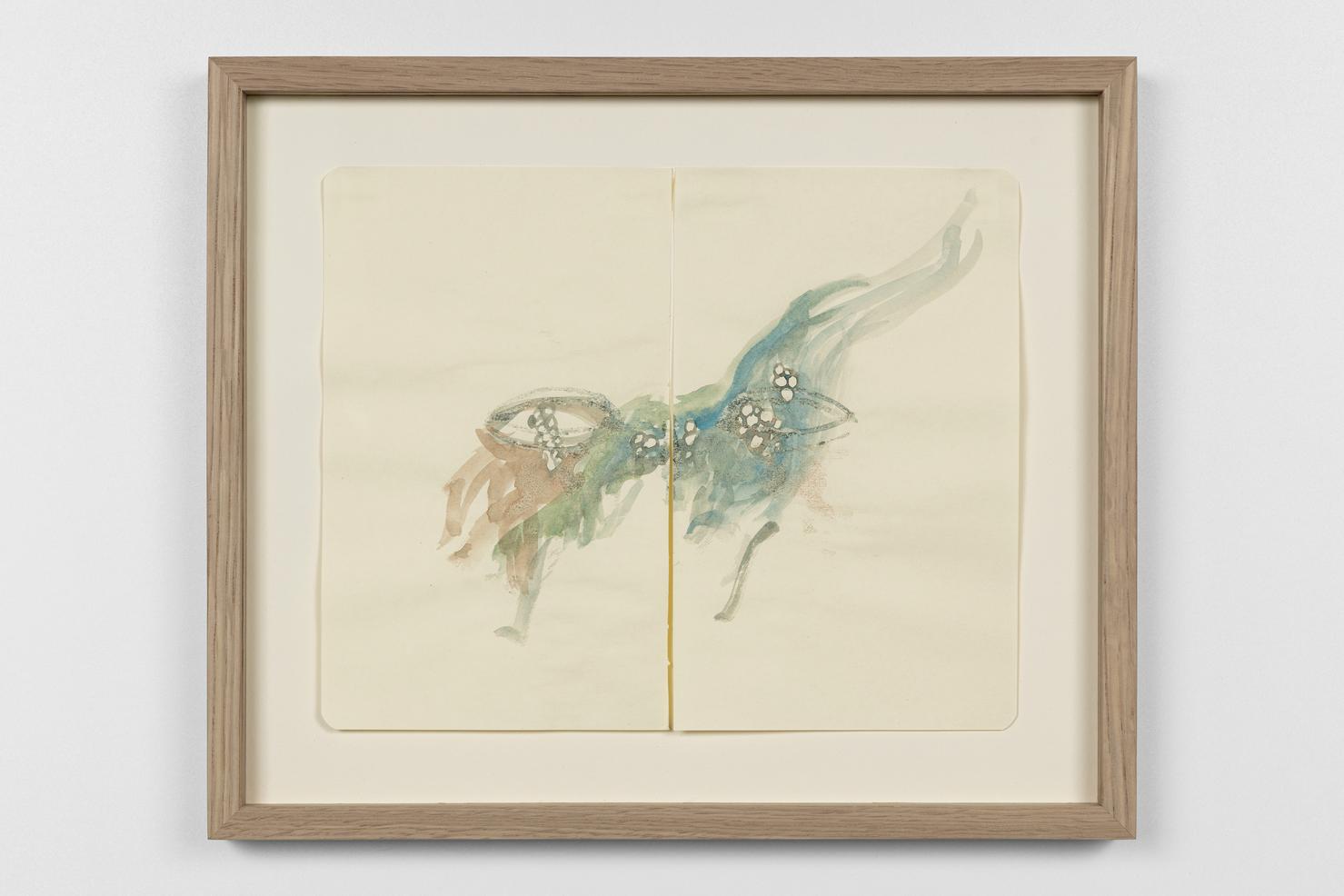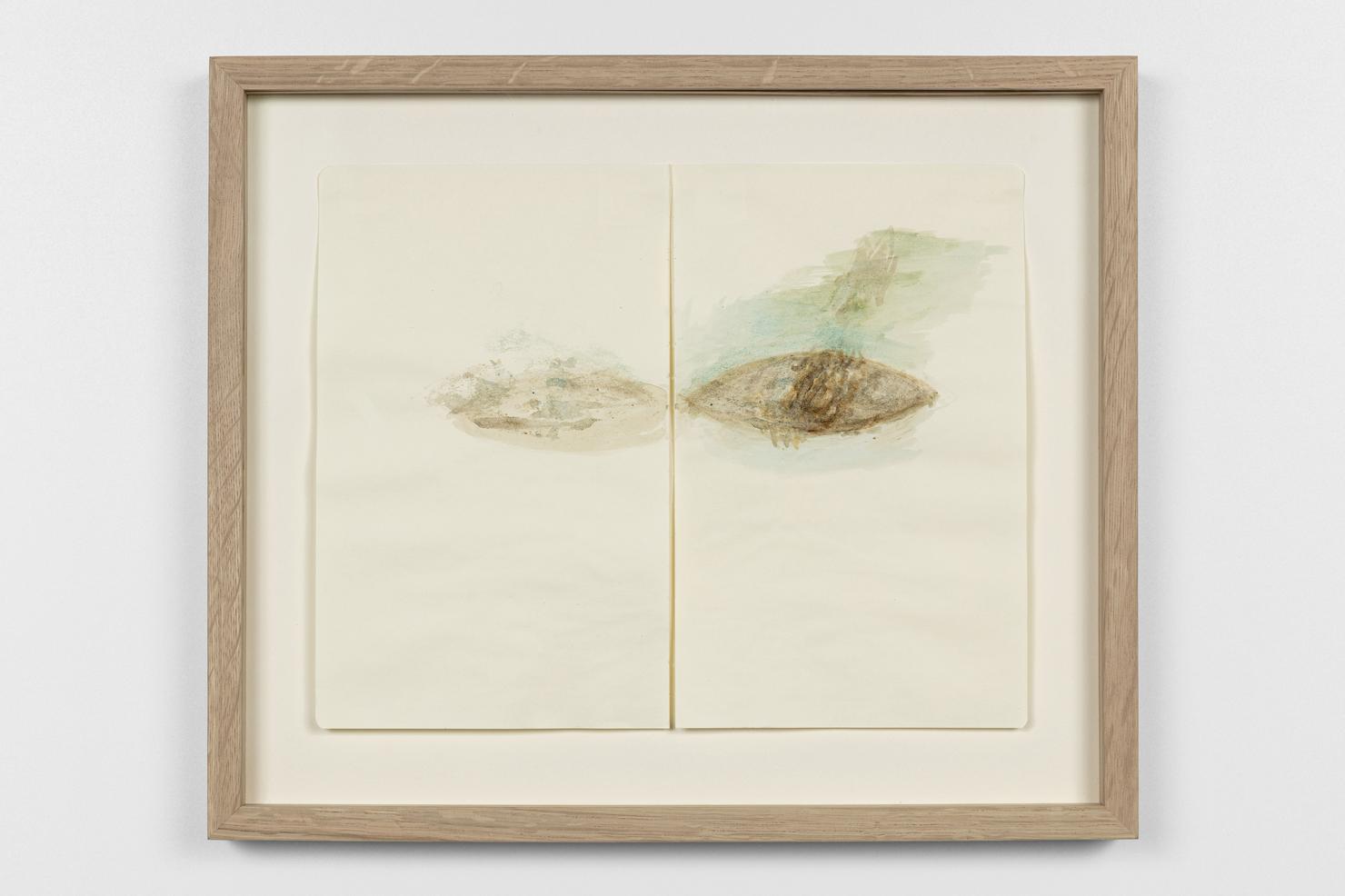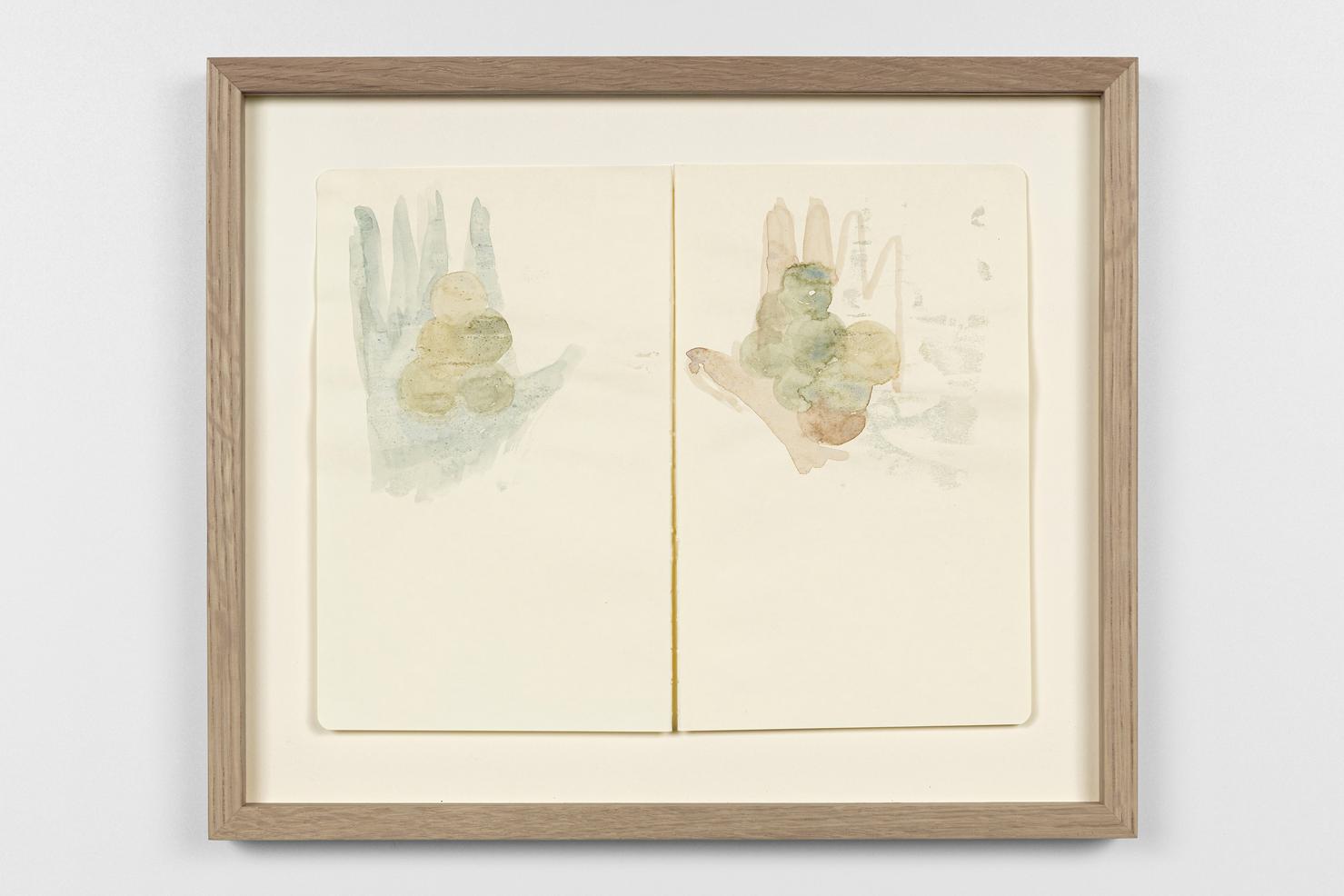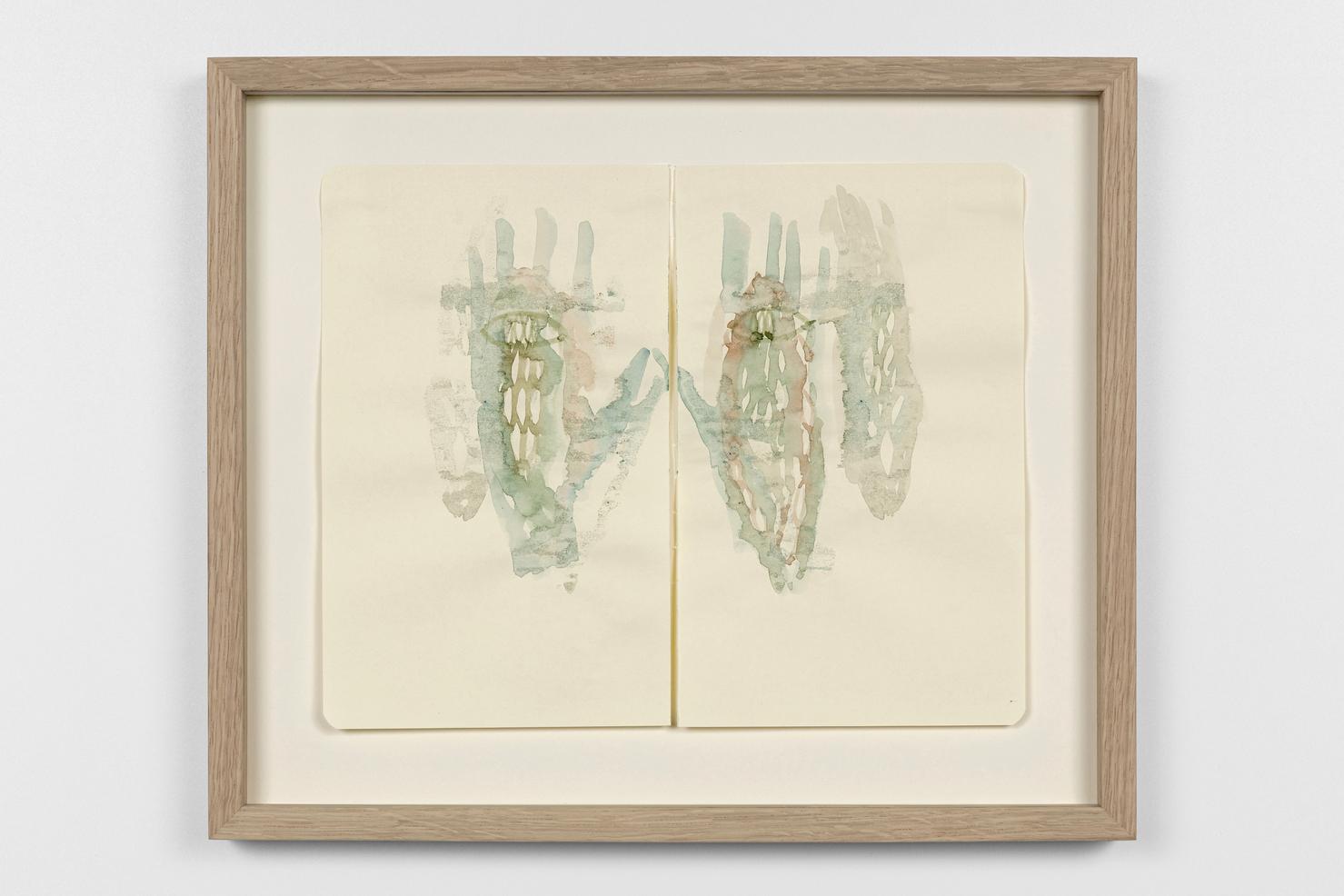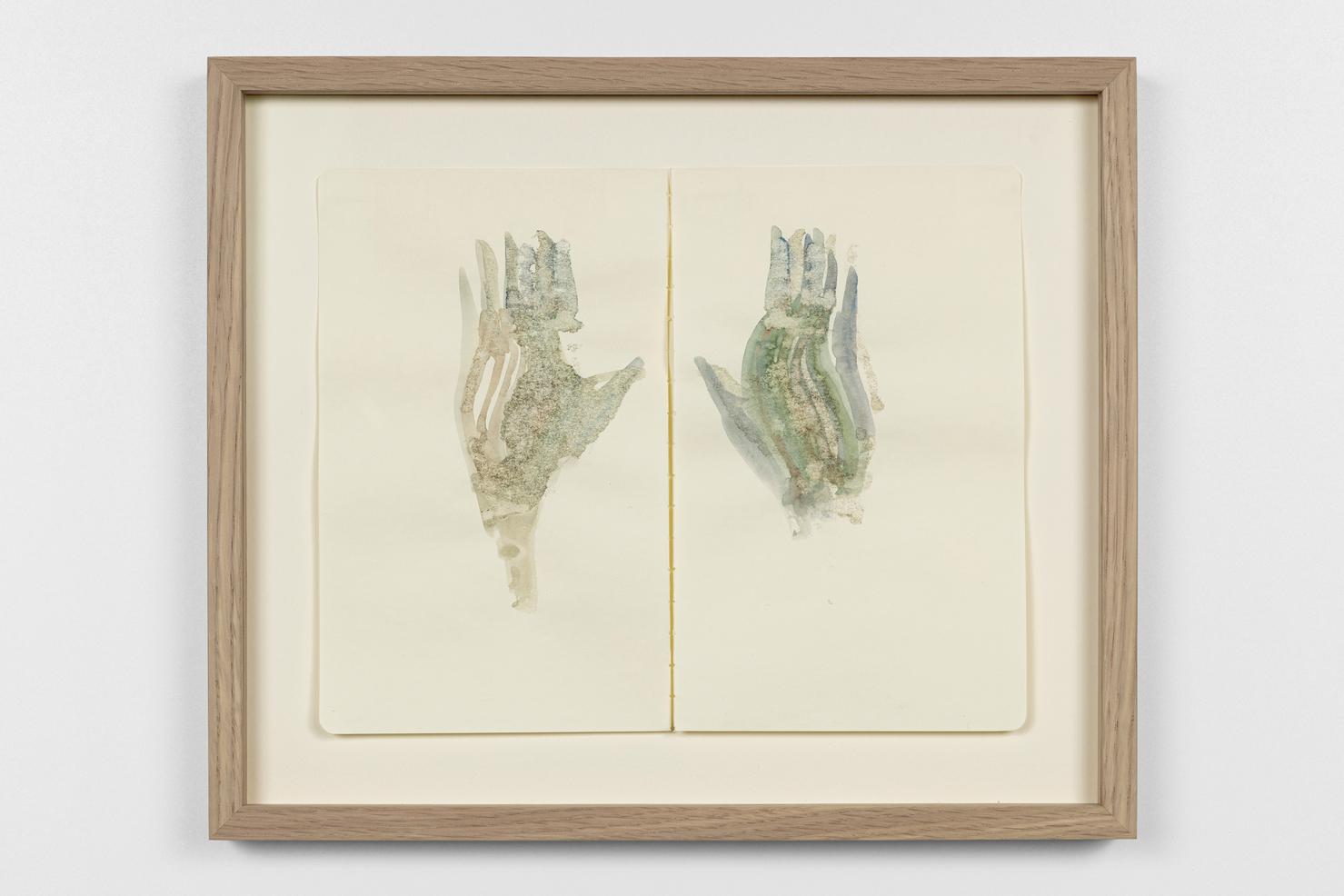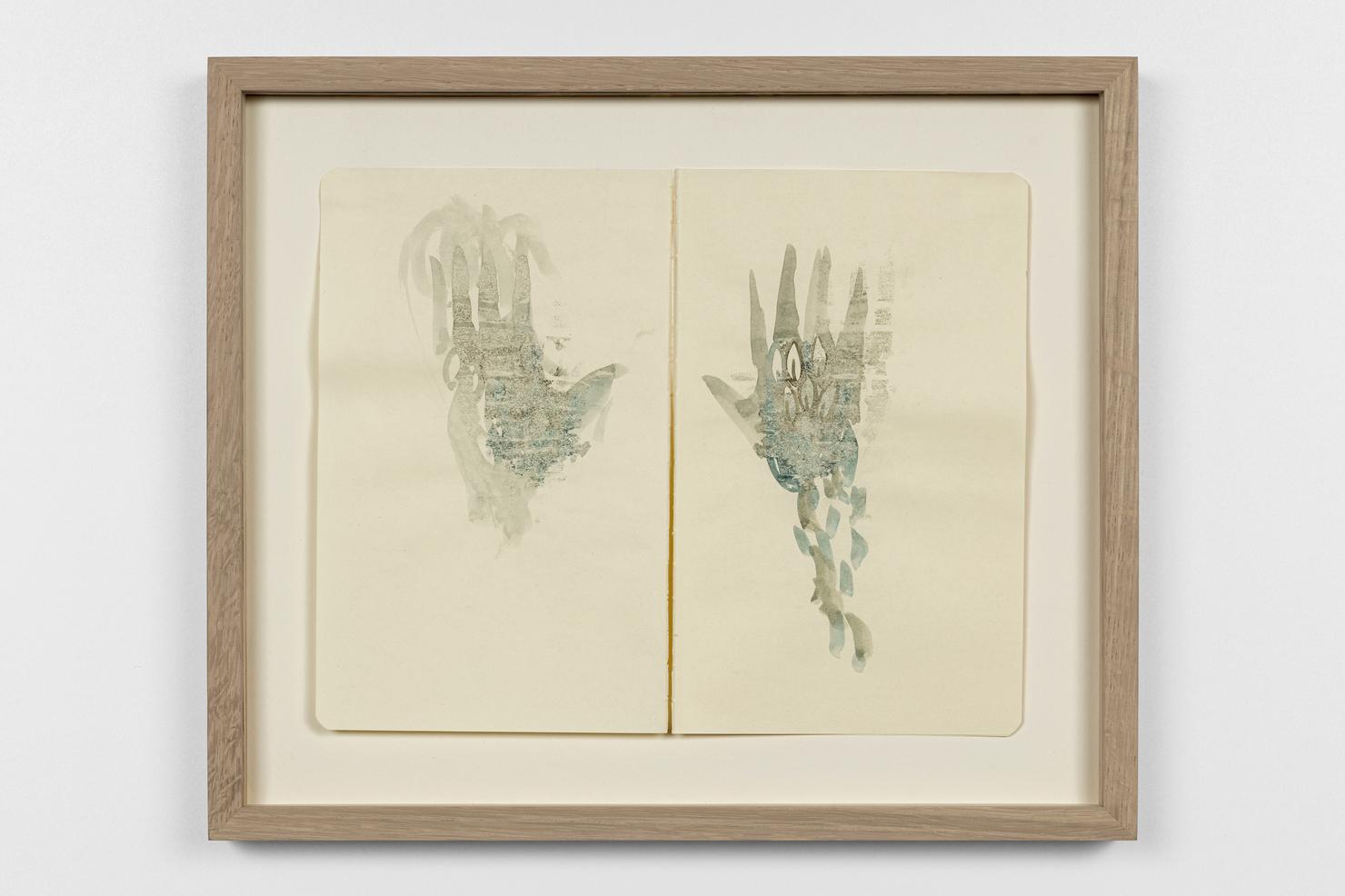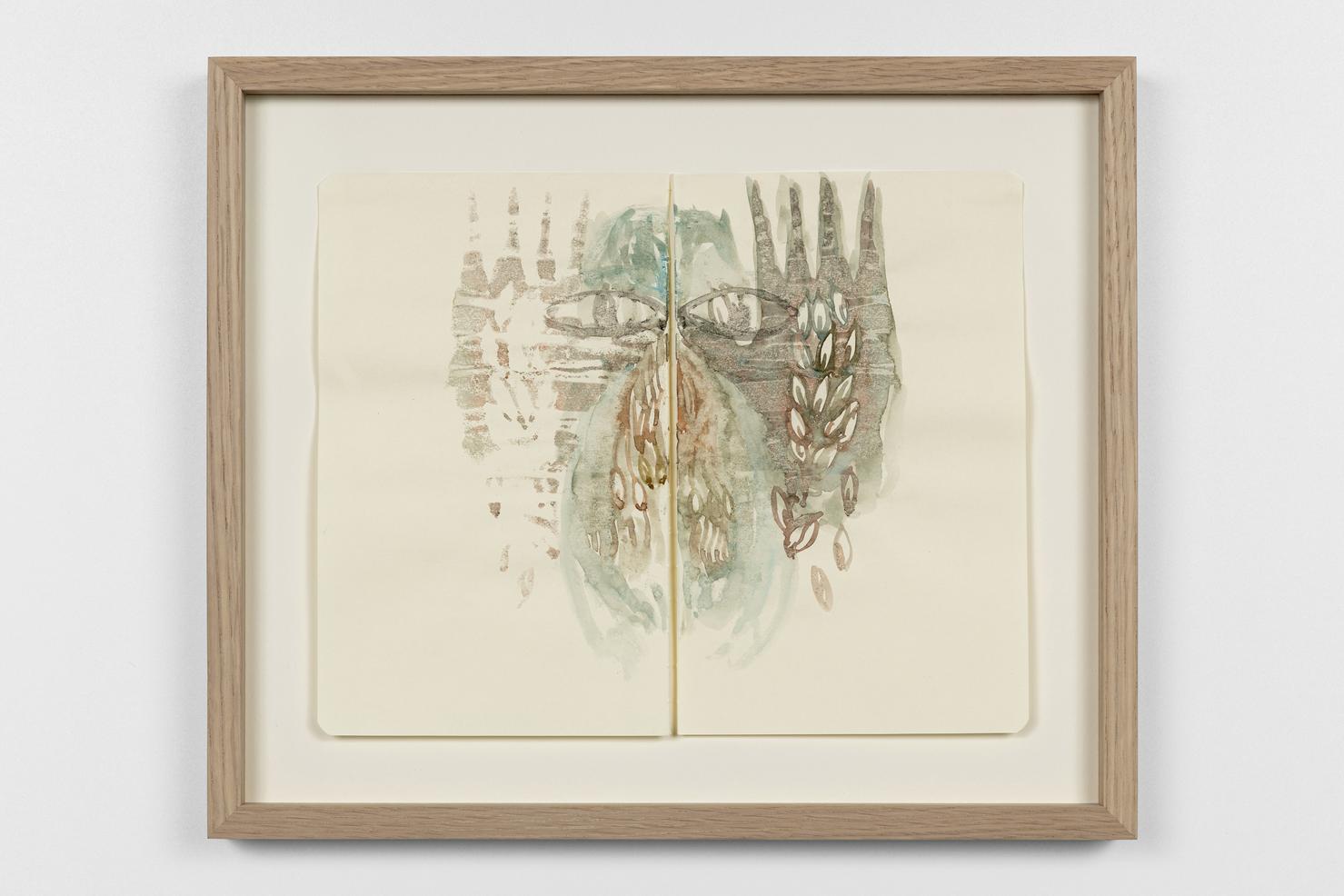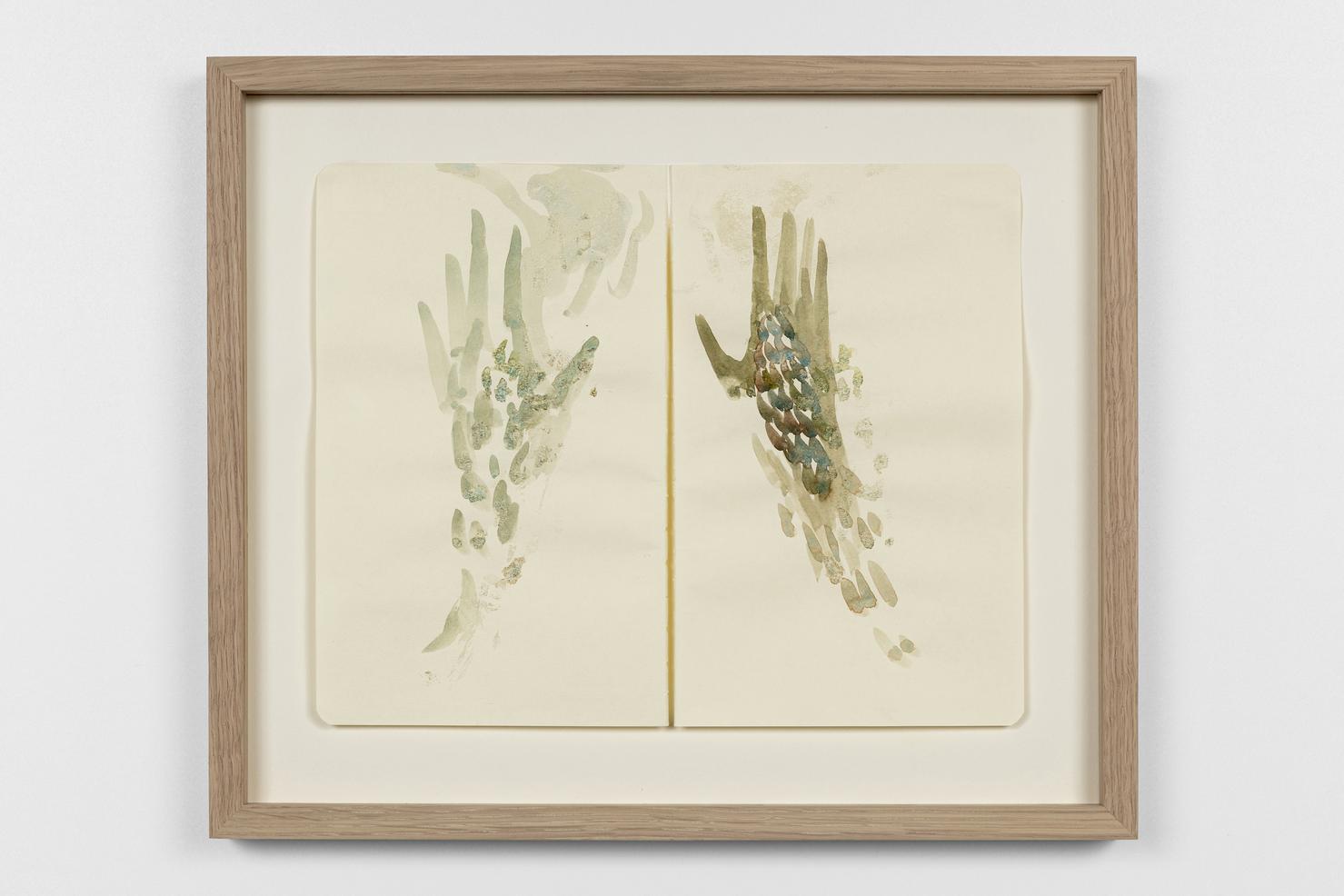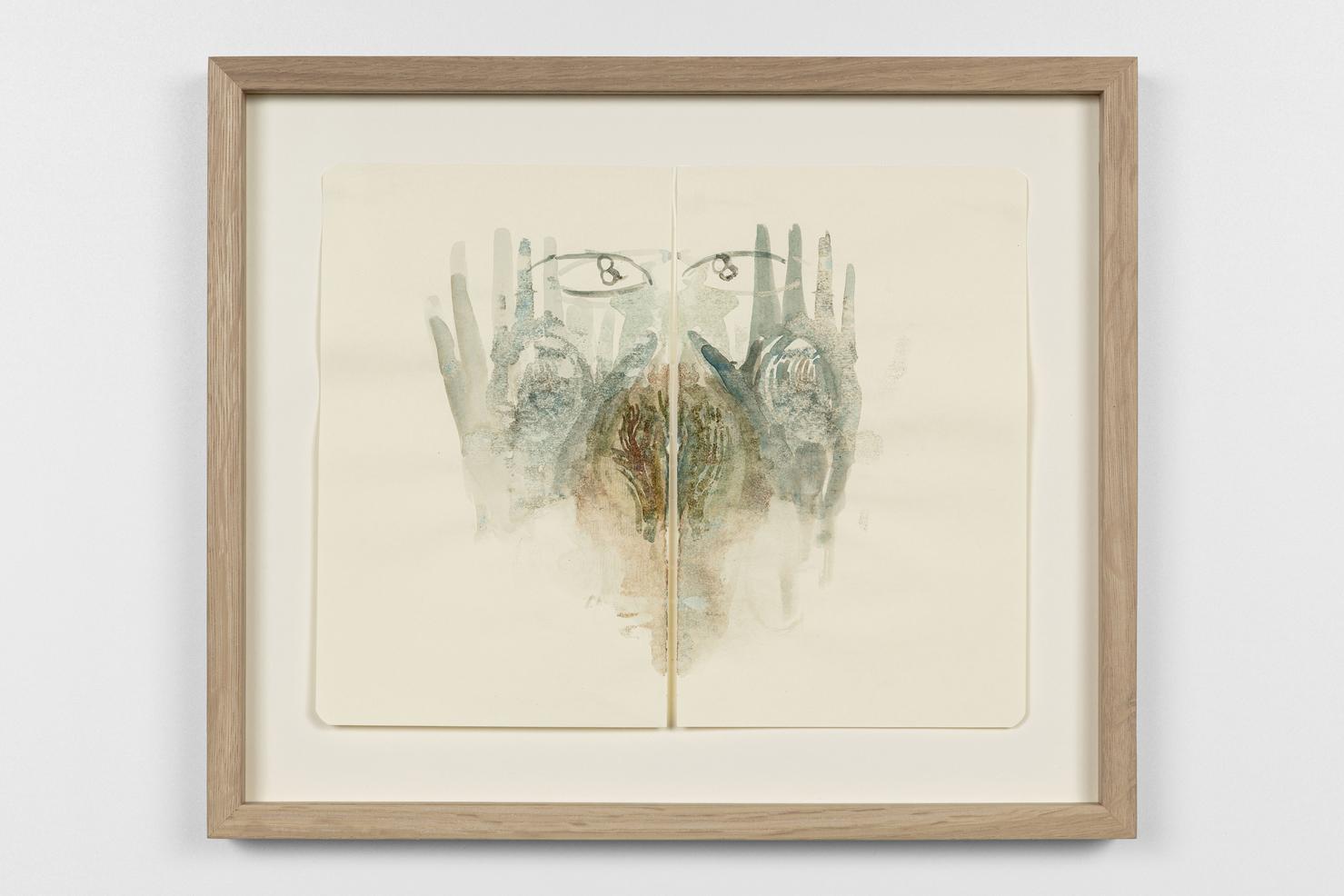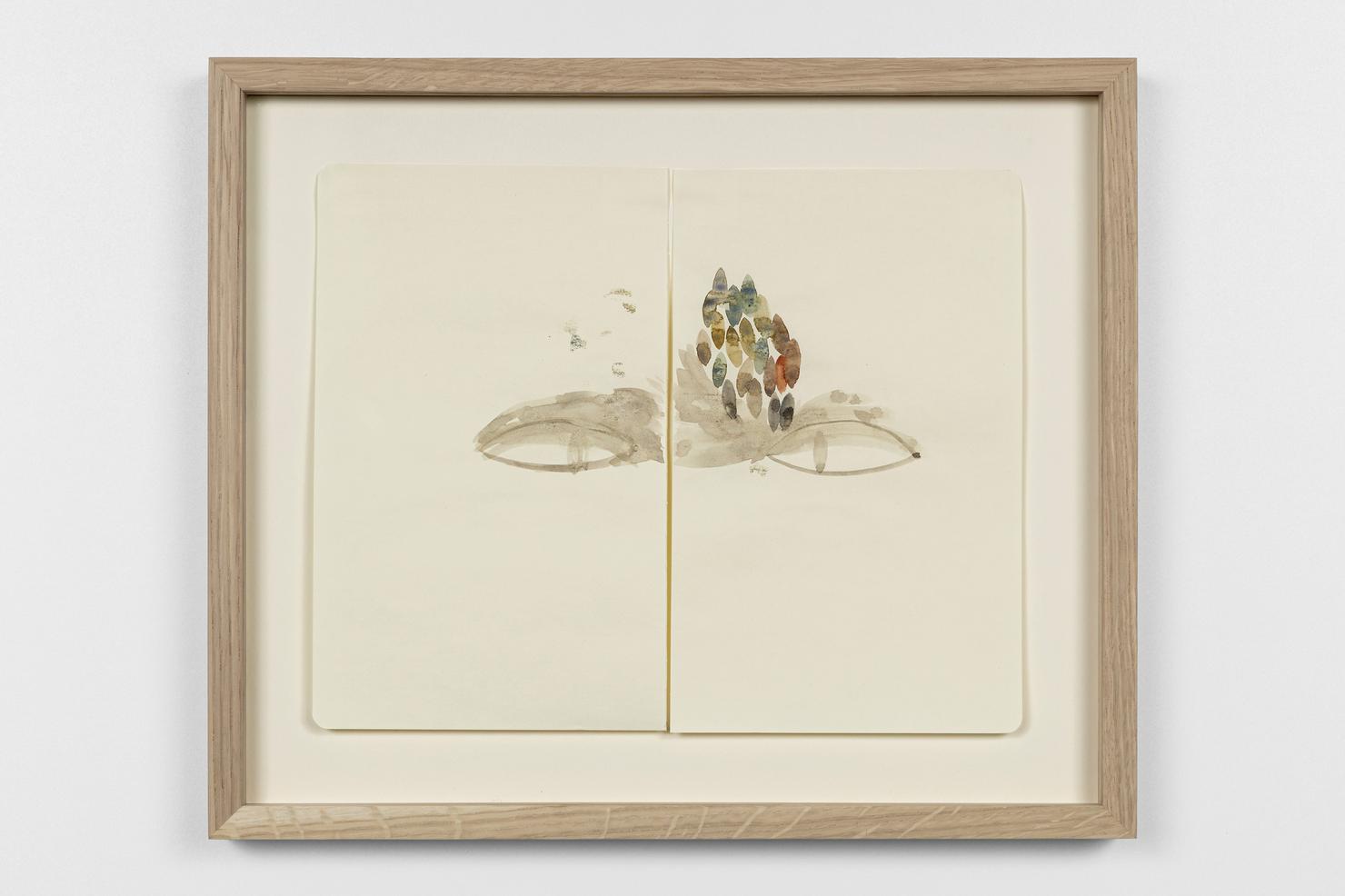Your enquiry email was sent successfully.
Your email was sent successfully.
Your enquiry email for favorites was sent successfully.

Eline McGeorge at Liste Art Fair Basel
Femtensesse is thrilled to participate at Liste Art Fair Basel for the fourth time with a solo presentation of Eline McGeorge. Influenced by science-fiction, feminist heritage, and self-organisation as strategy, McGeorge’s work investigates democratic processes and environmental concerns. At Liste she presents recent work from her long-term research into climate and ecological change—spanning Colombia’s vast coal-mining landscapes that border one of the world’s richest bird habitats, the resilient succulents of a Namibian diamond extracted desert, and the seabird cliffs of Northern Norway and areas around the Oslofjord, where habitats are rapidly disappearing. These investigations materialize in a wide-spanning frieze painted with water-based oils and pigments ground from foraged fungi; shimmering tapestries that interlaces strips of emergency blankets with images of sea creatures, plants, and geological formations from deep-sea ecosystems; and double-page spreads from her notebooks, whose fluid watercolors act as intimate fieldnotes allowing motifs such as eyes, hands, leaves, and seeds to transform and merge.
Eline McGeorge (b. 1970, Asker) lives and works in Oslo, Norway. She holds a Master of Fine Arts from Goldsmiths University of London. Recent solo exhibitions include to be part to be many and Fieldnotes - to be part to be many, at Kunstnerforbundet and Femtensesse, Oslo (2024); Here Between Worlds (2020), and On Joint Flight Lines (2018), Hollybush Gardens, London; and As Spaces Fold, Companions Meet, Oslo Kunstforening (2016). Her work has been featured in group exhibitions, such as The Hands that Shut the Sun, Hollybush Gardens (2025); the flies catch sight of us in the tall grass, Femtensesse, Oslo (2024); Our Silver City, 2094, Nottingham Contemporary (2021); Future Knowledge, Modern Art Oxford (2018); Rivers of Emotion, Bodies of Ore, Trondheim Kunsthall (2018); Ode to a washcloth, hymn to a tiger; Kunstnerforbundet, Oslo (2017) and Stavanger Kunsthall (2018); and We Are Living on a Star at Henie Onstad Kunstsenter, Høvikodden (2014). Her work is included in the collections of KORO – Public Art Norway, The City of Oslo Art Collection, The Art Museum KUBE, Ålesund and The National Collection of Contemporary Drawing, Ireland.
With generous support from OCA
Images courtesy of the artist, Femtensesse, Oslo and Hollybush Gardens, London
The presentation features a wide-spanning frieze in which hybrid figures—painted with water-based oil paint and pigments derived from foraged mushrooms—shift in form and merge with motifs that directly reference the sites and themes explored in McGeorge’s research. Unfolding as a banner-like visual tapestry, the work reveals a swarm of organic forms that gradually emerge upon closer viewing. Evoking an abundant diversity of species and natural life, the piece follows a visual logic grounded in porous categories. A quiet political force pulses through the frieze, as text embedded in the imagery accompanies the figures with the words: “a political imagery dispersed in eroded nutrients, seeds, spores, drops in the wind, dissolved as salt in the ocean... and again become ocean, rain, sap in the trees, blood streams of animals, saturating clay and tissue saying: nature and its dwellers are not property.”
Eline McGeorge interlaces strips of emergency blanket material—a symbolically charged material, tied to protest, crisis, and displacement—with imagery from deep-sea ecosystems. She uses this complex raw material to highlight issues related to political and economic value perspectives. Deep Sea, Emergency Weave was created in response to the Norwegian Parliament’s December 2023 decision to open a vast deep-sea region between Greenland and Norway for commercial mining licenses, the piece weaves together fragments of a fragile and largely unexplored world. Photographs of marine creatures and mineable geological formations are embedded into the warp of the emergency blanket, alongside a newspaper front page bearing the headline: “Bunnløs jakt på rikdom” (“Bottomless hunt for wealth”). The shimmering surface of the work causes the motif to shift with the light and with the viewer’s movement around it.
Though the mining decision is currently paused, the artwork poses pressing questions: How does the unknown—and its role in the larger web of life—measure against the political and economic imperatives of what a green transition might entail? How do we weigh the increasing need for minerals against the existence of ecosystems and life forms we barely understand? And ultimately, who holds the authority to decide the fate of ancient ecologies and their deep geological entanglement?
In the woven textile made from emergency blankets titled The Sea Around Us, Medusa Head, McGeorge comments on the Norwegian Parliament’s decision to open deep-sea areas in the Greenland Sea for mining exploration. These areas contain mineral-rich geological formations that are extractable and form the basis of much deep-sea life. The formations, along with the brittle star species Medusa Head (Gorgonocephalus), and the recognizable architecture of the Norwegian Parliament chamber, can be glimpsed through the shimmering weave of the material. The title of the work directly references Rachel Carson’s still-relevant 1951 book The Sea Around Us.
McGeorge’s watercolors, directly drawn from her sketchbooks, capture her first-hand encounters with diverse environments, including a vast coal mining landscape in Colombia, indigenous succulents growing in diamond-mined sand in Namibia, lichen species adapted to heavy metal runoff from mines in Røros, and bird cliffs in Northern Norway. The double-page spreads from her sketchbooks reveal a profound connection with these sites, serving as intimate ‘fieldnotes,’ where the flowing watercolors allow motifs—such as eyes, hands, leaves, and seeds—to transform and merge.




